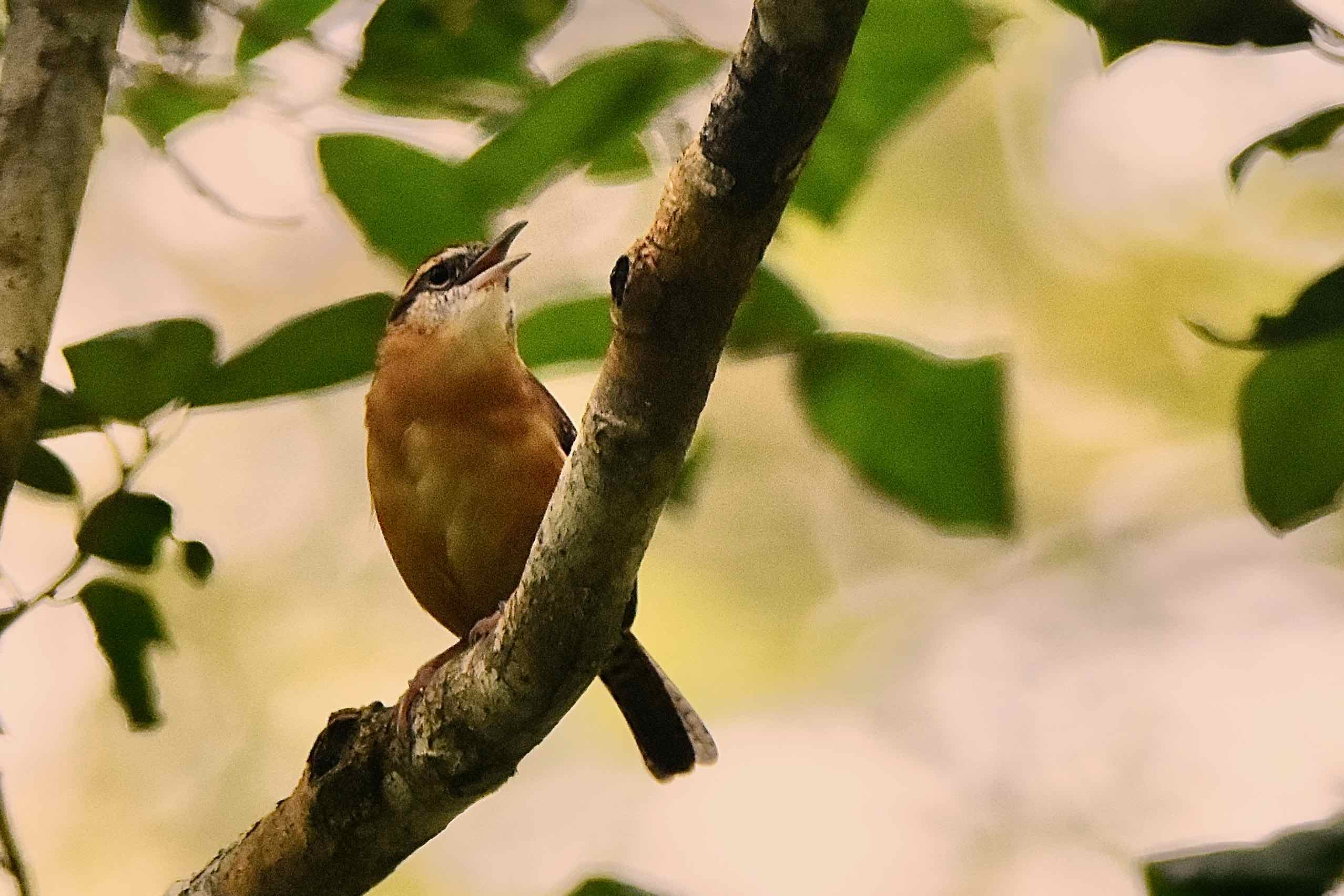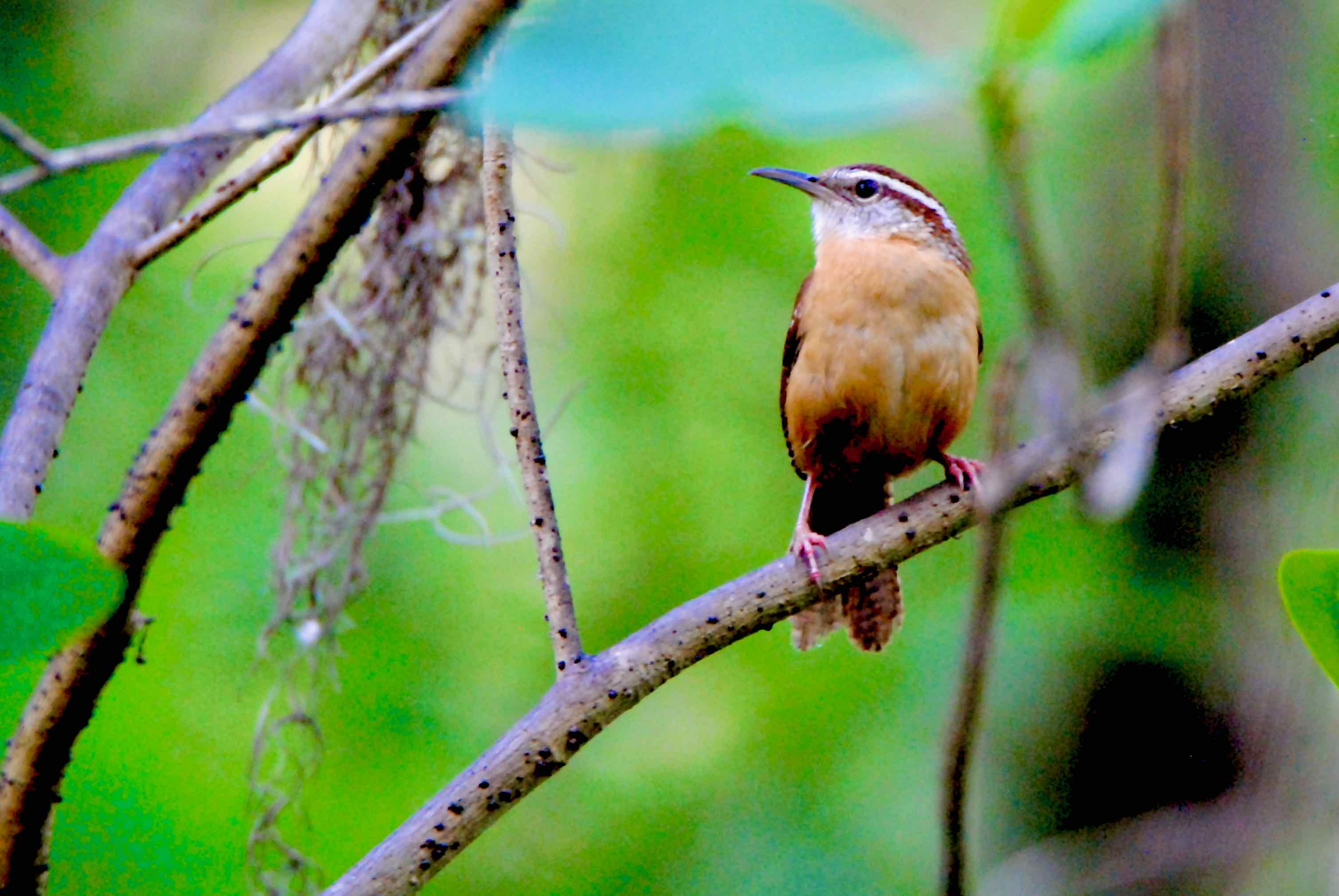
Carolina wren, photographed at Guana Tolomato Matanzas National Estuarine Research Reserve, Ponte Vedra Beach, St. Johns County, in April 2016.
If you hear a Carolina wren, Thryothorus ludovicianus, then manage to spot it, it's hard to believe you're looking at the same bird. It is tiny, but does it ever have a set of lungs. It is loud, but in a pleasant sort of way.
The songs of this bird can pierce the woods. A male will blast judee judee judee to his mate, who replies with a staccato dit dit dit, as if they are playing an avian version of Marco-Polo. But they also can drop the decibels as they dance together through the thickets and tangles just above the forest floor.
Carolina wrens are common birds, found throughout much of the eastern United States from Iowa to New York and Massachusetts, south to Florida and west to Texas. Their range also includes parts of Mexico as far south as the Yucatan. There's some evidence that Carolina wrens are gradually expanding their territory farther north, although an unusually cold winter will push them back south temporarily. They can be rare in parts of their range but overall, their population is growing.
They go about five inches long, with a wingspan of less than a foot. They are generally cinnamon-colored, with the bright white line over the eye. The tail is lightly barred, long in comparison with its body length, and usually cocked, which help make the Carolina wren fairly easy to identify. Females are similar to males.
Florida's population tends to be darker than those found in other parts of the continent. They're also divided into three subspecies by geography, according to the Florida Fish and Wildlife Conservation Commission: T. l. ludovicianus in the Panhandle; T. l. miamensis in the Peninsula; and T. l. nesophilus, found only on Dog Island in Franklin County.
There are few places in Florida where you won't find this bird nesting. The major exceptions include the farmlands of western Palm Beach County and urban Miami, which lack suitable habitat. A census done in the late '80s and early '90s failed to find carolina wrens nesting in the lower Keys as well.
Food for this bird includes beetles, crickets, spiders and other bugs. It will take the occasional small lizard and tree frog. Berries and other small fruit are also on the menu.
Carolina wrens bond together any time of the year, and apparently for life. They often forage together and both mates build their nest.
Nests are usually in cavities or overhangs, natural or artificial, and no more than 10 feet off the ground. They are made of sticks, leaves and other vegetation, and lined with moss, grass, feathers or hair. According to the FWC, the nest always includes a piece of snake skin or clear plastic that looks like snake skin. They can be fairly elaborate, with domes and even something of a porch.
In Florida, nesting season begins as early as February and runs as late as September. Females lay clutches of five or six eggs typically, and handle all the incubation duties, while males bring home dinner. The eggs take about two weeks to hatch; the young take another two weeks before they fledge. In northern climes, Carolina wrens will raise two broods a year, three in warmer places.
Carolina wrens like thick, woody habitats including cypress swamps — they are common in the Loxahatchee National Wildlife Refuge — but can be found in suburbs with sufficient brushy cover.
Carolina wrens are members of Troglodytidae, the wren family.



